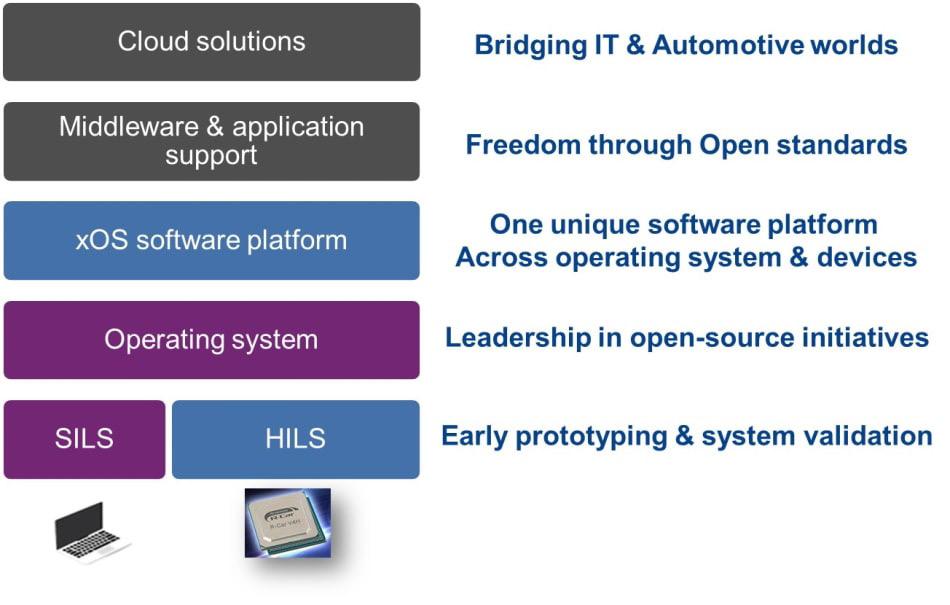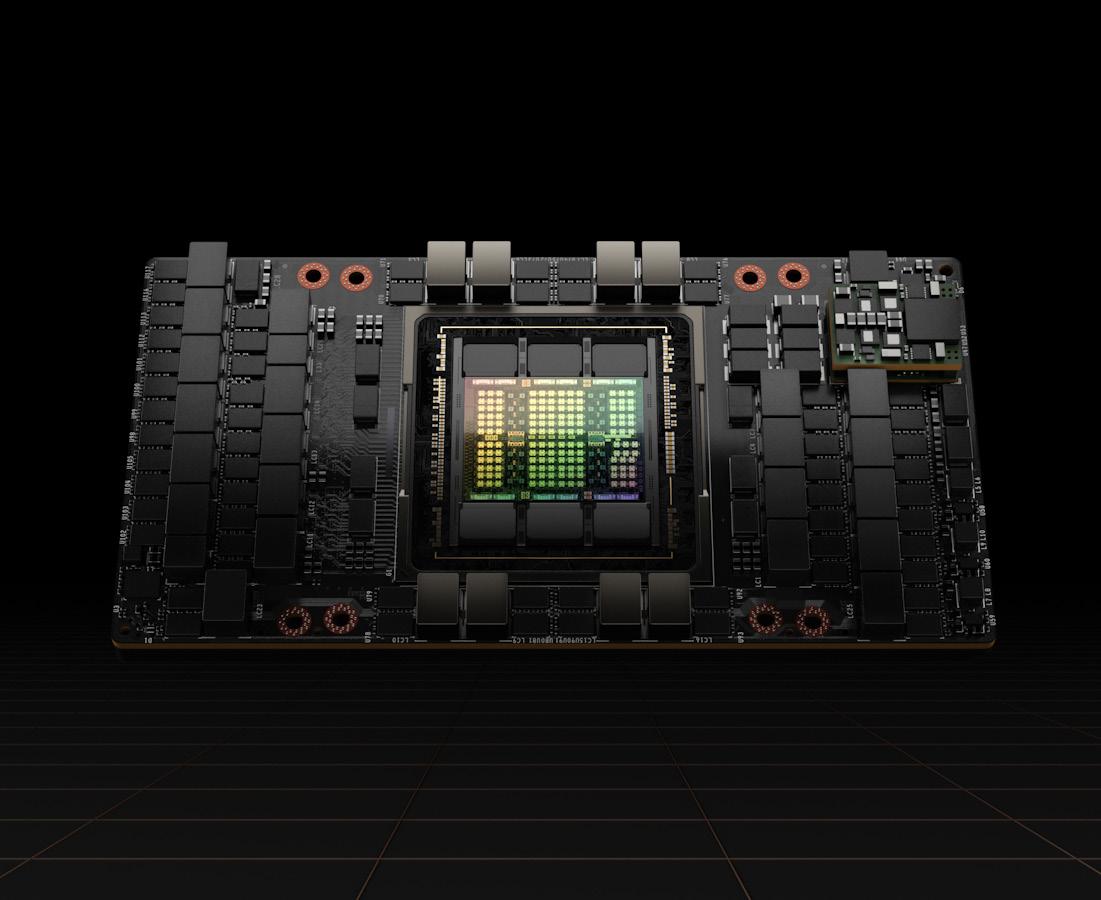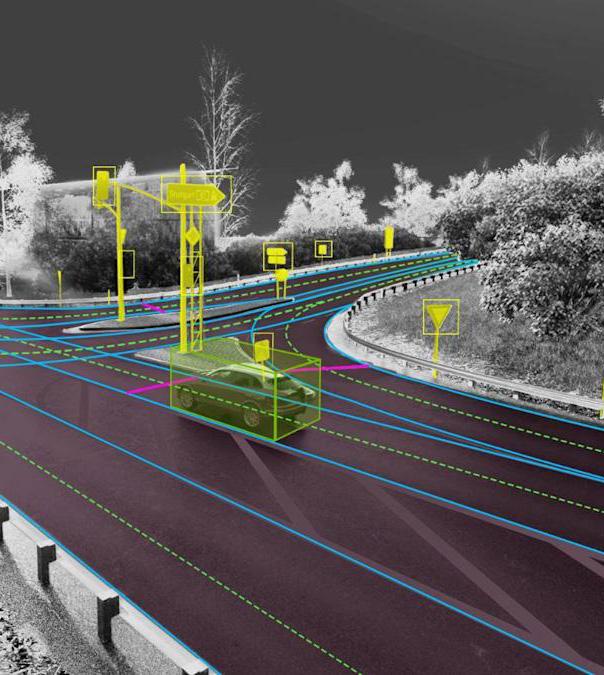
7 minute read
Product Launch
Renesas unveils R-Car V4H for automated driving Level 2+ / Level 3 to support high-volume vehicle production in 2024
R-Car V4H for Automated Drive L2+ / L3
Advertisement
Renesas Electronics Corporation announced the R-Car V4H system on chip (SoC) for central processing in advanced driver-assistance (ADAS) and automated driving (AD) solutions. The R-Car V4H achieves deep learning performance of up to 34 TOPS (Tera Operations Per Second), enabling highspeed image recognition and processing of surrounding objects by automotive cameras, radar, and lidar.
The R-Car V4H enables performance per watt through a careful combination of bestin-class IP and expert HW optimization. It targets the highest volume zones of automated driving: Level 2+ and Level 3.
The R-Car V4H allows customers to develop cost-competitive, single-chip, ADAS electric control units (ECUs). These control units may support driving systems appropriate for automated driving Levels 2+ and Level 3, including full NCAP 2025 features. The R-Car V4H also supports surround view and automatic parking functions with impressive 3D visualization effects such as realistic rendering.
Combo Solution Supports the Industry’s Stringent ASIL Requirements
R-Car V4H Vertical Integration Regarding ISO 26262 functional safety, the SoC development process targets ASIL D systematic capability for all safety relevant IP. The signal processing portion of the R-Car V4H is expected to achieve ASIL B and D metrics for the real time domain.
Furthermore, Renesas provides a dedicated power solution for R-Car V4H based around the RAA271041 preregulator and the RAA271005 PMIC. This enables a highly reliable power supply for the R-Car V4H and peripheral memories from the 12V supply of the vehicle battery. These features enable low power operation while targeting ASIL D compliance for systematic and random hardware faults at very low BOM cost. This helps to minimize the effort of hardware and software development while reducing design complexity, cost, and time to market.

Embedded Software Platform Development Paving the Way to the Software-Defined Car
An R-Car V4H software development kit (SDK) is also available to perform faster and easier initial device evaluation, and software development including deep learning. The SDK offers full functionality for machine learning development, and optimization of embedded systems for performance, power efficiency, and functional safety. Complete simulation models are available, and the Renesas operating system agnostic software platform enables easier development of the software-defined car. In case of development from scratch, Fixstars’ Genesis platform enables engineers to evaluate R-Car from anywhere via their cloud solution and can provide quick and easy CNN benchmark results.
Key Features of R-Car V4H
● Four Arm® Cortex®-A76 at 1.8 Ghz for a total of 49KDMIPS of general compute for ADAS / AD applications ● Three lockstep Arm® Cortex®-R52 cores at 1.4 Ghz, for a total of 9KDMIPS to support ASIL D real-time operation and eliminate the need for external microcontrollers ● Dedicated Deep Learning & Computer
Vision I/Ps with overall performance of 34 TOPS ● Image Signal Processor (ISP) with parallel processing for machine and human vision ● Image renderer (IMR) for fisheye distortion correction or other mathematical operation ● Graphic processor Unit (GPU) AXM-8256 @ 600MHz, for a total of over 150
GFLOPS ● Dedicated automotive Interfaces: CAN,
Ethernet AVB, TSN and FlexRay ● Two fourth generation PCIe interfaces
NVIDIA announces Hopper architecture, the next generation of accelerated computing
NVIDIA announced its nextgeneration accelerated computing platform with NVIDIA Hopper™ architecture, delivering an order of magnitude performance leap over its predecessor.
Named for Grace Hopper, a pioneering U.S. computer scientist, the new architecture succeeds the NVIDIA Ampere architecture, launched two years ago.
The company also announced its first Hopper-based GPU, the NVIDIA H100, packed with 80 billion transistors. The world’s largest and most powerful accelerator, the H100 has groundbreaking features such as a revolutionary Transformer Engine and a highly scalable NVIDIA NVLink® interconnect for advancing gigantic AI language models, deep recommender systems, genomics and complex digital twins.

H100 Technology Breakthroughs:
The NVIDIA H100 GPU sets a new standard in accelerating large-scale AI and HPC, delivering six breakthrough innovations:
World’s Most Advanced Chip -Built with 80 billion transistors using a cutting-edge TSMC 4N process designed for NVIDIA’s accelerated compute needs, H100 features major advances to accelerate AI, HPC, memory bandwidth, interconnect and communication, including nearly 5 terabytes per second of external connectivity. H100 is the first GPU to support PCIe Gen5 and the first to utilize HBM3, enabling 3TB/s of memory bandwidth. Twenty H100 GPUs can sustain the equivalent of the entire world’s internet traffic, making it possible for customers to deliver advanced recommender systems and large language models running inference on data in real time.
New Transformer Engine — Now the standard model choice for natural language processing, the Transformer is one of the most importat deep learning models ever invented. The H100 accelerator’s Transformer Engine is built to speed up these networks as much as 6x versus the previous generation without losing accuracy.
2nd-Generation Secure Multi-Instance GPU — MIG technology allows a single GPU to be partitioned into seven smaller,
fully isolated instances to handle different types of jobs. The Hopper architecture extends MIG capabilities by up to 7x over the previous generation by offering secure multitenant configurations in cloud environments across each GPU instance.
Confidential Computing — H100 is the world’s first accelerator with confidential computing capabilities to protect AI models and customer data while they are being processed. Customers can also apply confidential computing to federated learning for privacy-sensitive industries like healthcare and financial services, as well as on shared cloud infrastructures.
4th-Generation NVIDIA NVLink
— To accelerate the largest AI models, NVLink combines with a new external NVLink Switch to extend NVLink as a scale-up network beyond the server, connecting up to 256 H100 GPUs at 9x higher bandwidth versus the previous generation using NVIDIA HDR Quantum InfiniBand.
DPX Instructions — New DPX instructions accelerate dynamic programming — used in a broad range of algorithms, including route optimization and genomics — by up to 40x compared with CPUs and up to 7x compared with previous-generation GPUs. This includes the Floyd-Warshall algorithm to find optimal routes for autonomous robot fleets in dynamic warehouse environments, and the Smith-Waterman algorithm used in sequence alignment for DNA and protein classification and folding. The combined technology innovations of H100 extend NVIDIA’s AI inference and training leadership to enable real-time and immersive applications using giantscale AI models. The H100 will enable chatbots using the powerful monolithic transformer language model, Megatron 530B, with up to 30x higher throughput than the previous generation, while meeting the subsecond latency required for real-time conversational AI. H100 also allows researchers and developers to train massive models such as Mixture of Experts, with 395 billion parameters, up to 9x faster, reducing the training time from weeks to days. Nvidia’s Drive Map, a mapping product for the autonomous vehicle industry
Nvidia has launched a mapping platform geared towards autonomous cars called Drive Map. The map coverage encompasses 482,800 km of roadway across North America, Asia and Europe which will be achieved by 2024.
The platform has a clear intent - it wants autonomy to be ubiquitous and it is a space the world’s most valuable semiconductor company has invested heavily in. This technology, Nvidia intends to open up to third parties, just not restrict it to its own platforms.
Alongside this, Nvidia launched the next generation of Drive Hyperion which is its sensor and compute self-driving stack which is used already by the likes of Mercedes, Volvo, JiDU, BYD and Lucid Motors. Autonomous vehicle companies like TuSimple, WeRide, Amazon backed Zoox and DeepRoute.AI are also using Hyperion.
Drive Map is based on the technology from DeepMap, a company Nvidia acquired last year. It enables centimetre level accuracy by combining DeepMap accurate survey mapping data with anonymous mapping data that has been crowdsourced from vehicles that leverage Hyperion platform. The mapping tool kit is a combination of camera, LiDAR, and radar to provide layers of redundancy needed for autonomy.
All the data pulled from Nvidia customers is being uploaded in real time to the Nvidia cloud as the car drives. Then it is aggregated and loaded on Nvidia’s omniverse platform which enables virtual collaboration in real time enabling accurate simulations. It is used to update the map so the vehicles can achieve proper localisation. This is how Nvidia scales the map and ensures incredible accuracy.
There are automated Omniverse tools which enable content generation like the building of a detailed map and then is converted into a drivable simulation that be used with the Nvidia Drive Sim.











